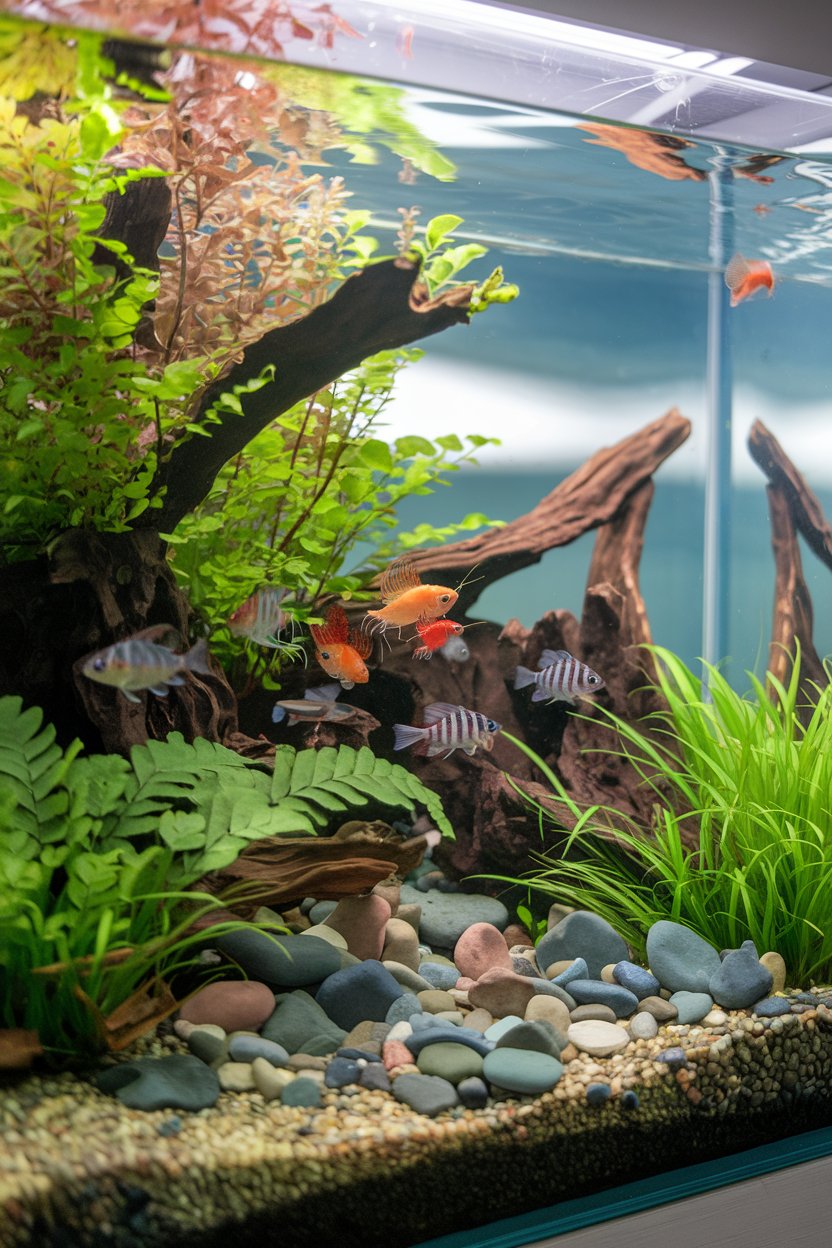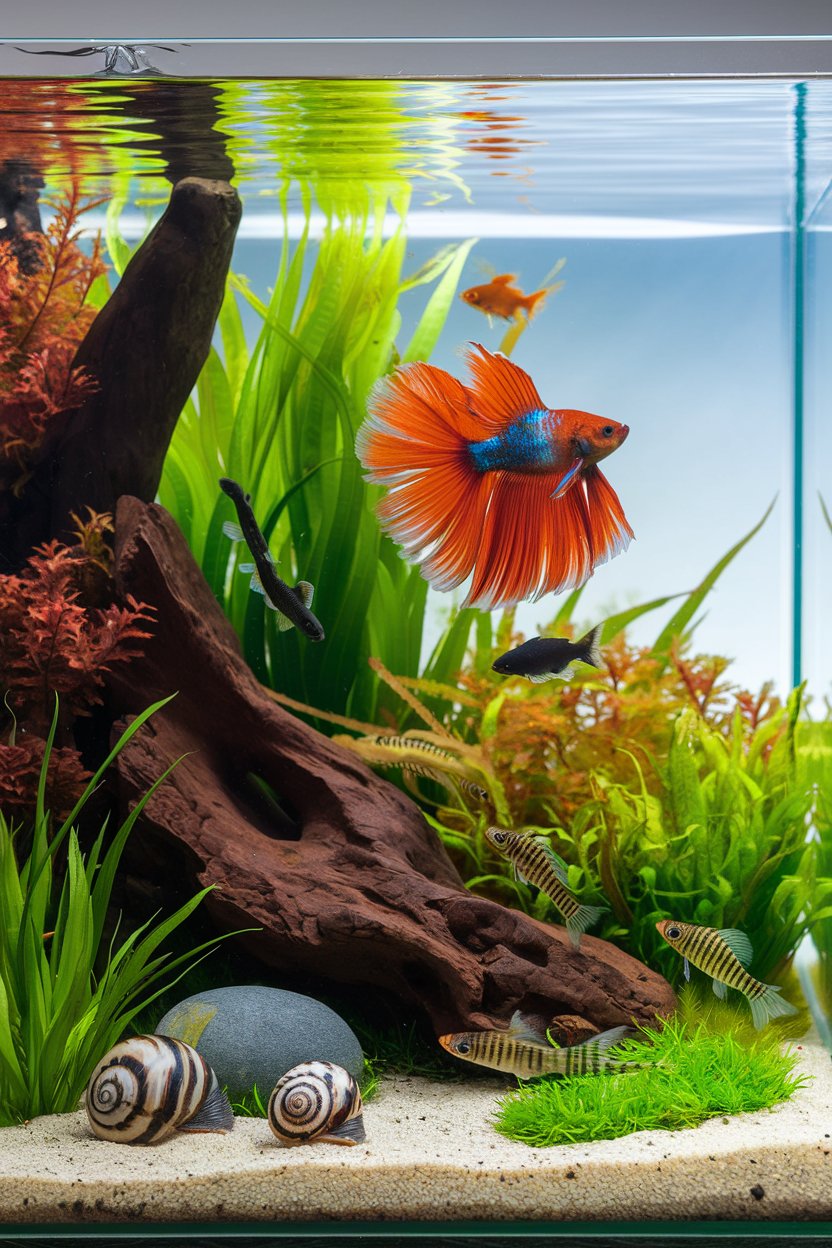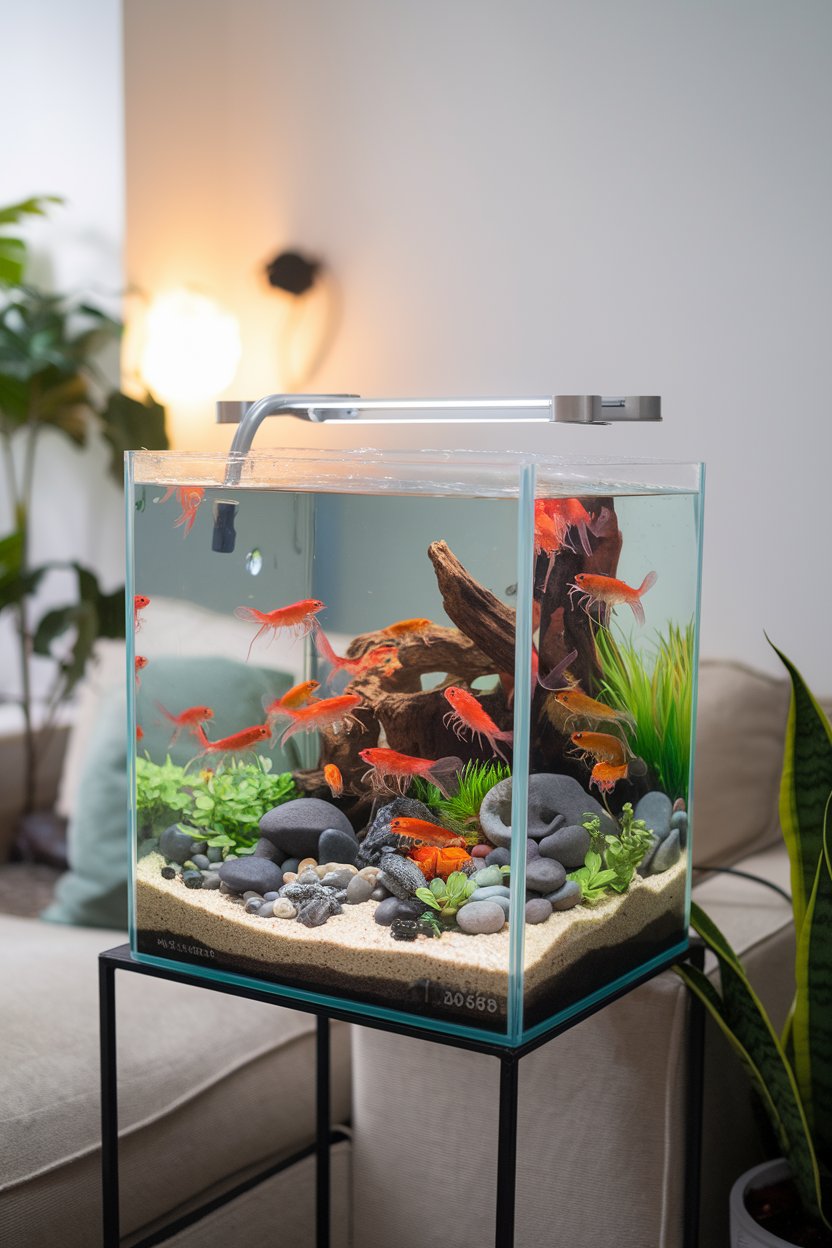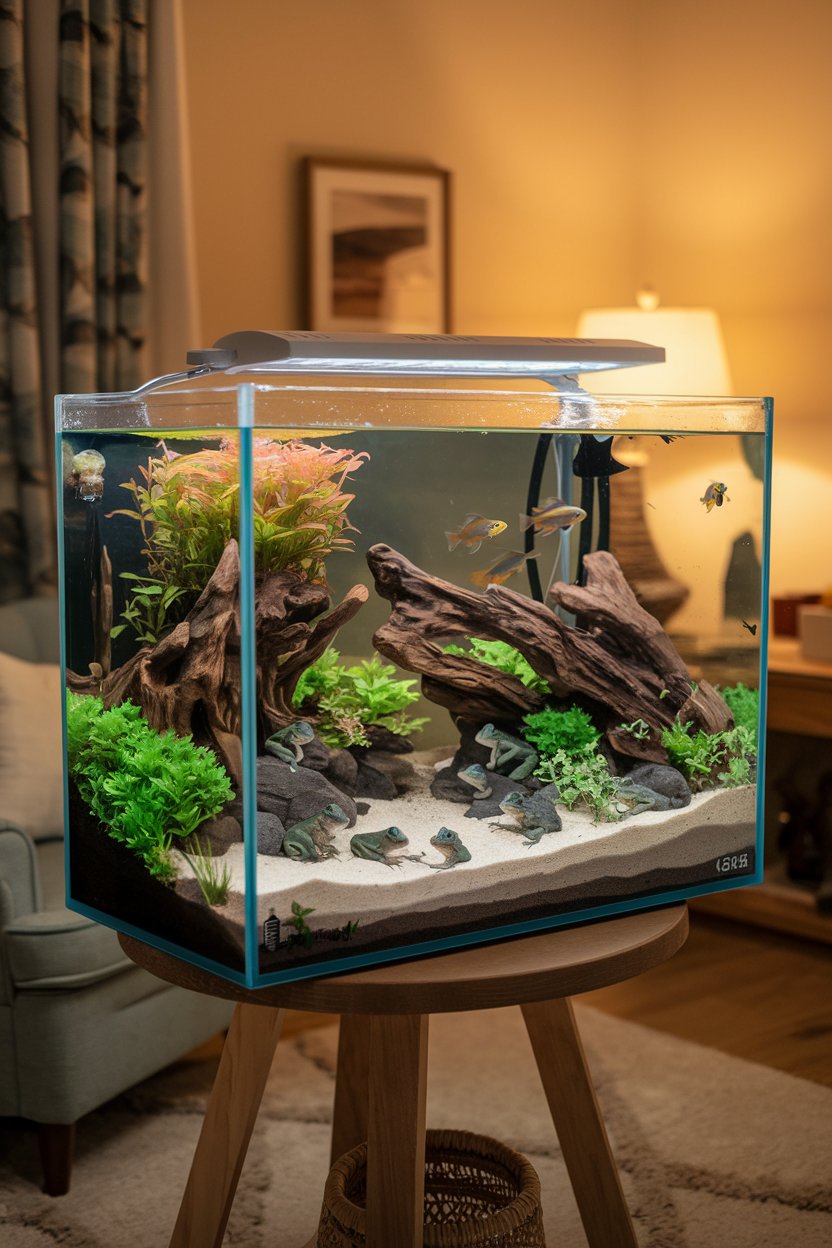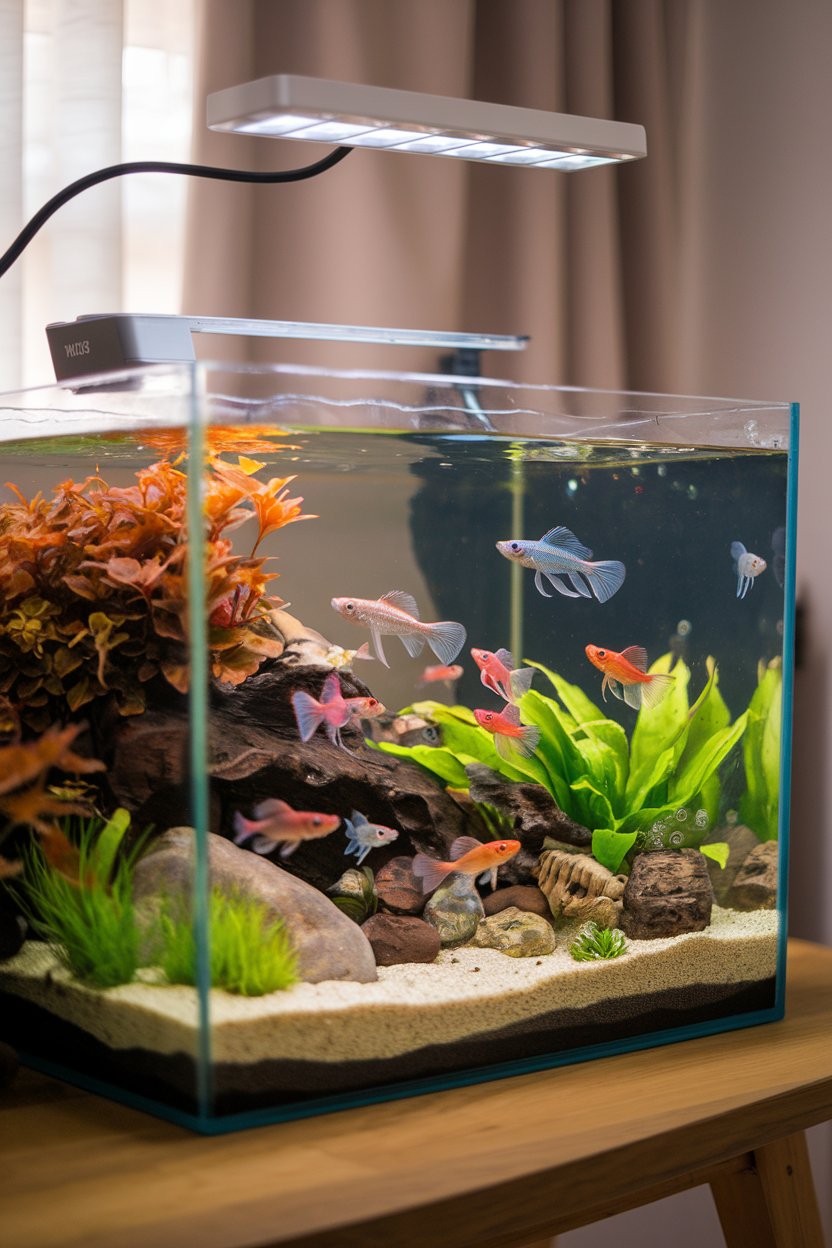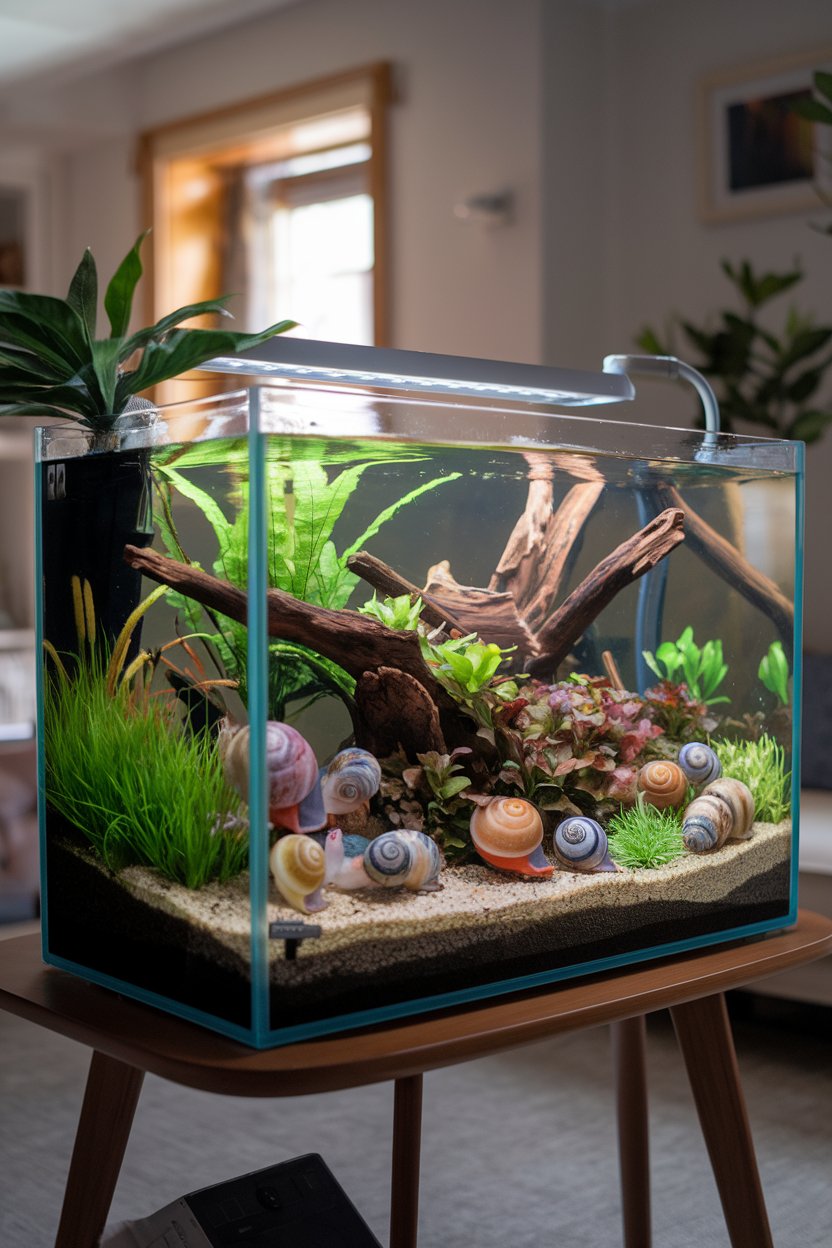13 Ideal Stocking Ideas for a 20-Gallon Freshwater Aquarium
Stocking a 20-gallon freshwater aquarium requires thoughtful planning to create a balanced, visually appealing, and healthy environment for the fish. With the right selection of species, a 20-gallon tank can support a beautiful ecosystem that thrives and complements various decorations and plant setups.
In this guide, we will explore 13 unique and exciting stocking ideas, helping you make the most out of your tank space while catering to the needs of each fish.
1. Peaceful Community Tank
A peaceful community tank is a great choice for beginners and seasoned aquarists alike. By selecting compatible, calm species, you can create a harmonious aquarium that’s low-maintenance yet full of life. Consider including Neon Tetras (8-10), Cherry Shrimp (6-8), and Corydoras Catfish (3-4). Neon Tetras add color, while Cherry Shrimp and Corydoras help keep the substrate clean by scavenging for leftover food.
2. Betta and Tank Mates Setup
A Betta fish can thrive in a community setting with careful planning. Although Bettas are territorial, they can coexist with certain species that won’t stress them. We recommend Betta (1 male or female), Kuhli Loaches (4-5), and Snails (such as Nerite or Mystery Snails, 2-3). The loaches and snails are peaceful and occupy different parts of the tank, reducing the likelihood of conflict with the Betta.
3. South American Biotope Tank
For an authentic biotope experience, a South American setup replicates the natural habitat of Amazonian fish. Stock this tank with Cardinal Tetras (8-10), Dwarf Cichlids like Apistogramma (1 pair), and Otocinclus Catfish (4-5). These species share similar water requirements and will thrive in a densely planted environment with driftwood and leaf litter to mimic the Amazon River basin.
4. Asian-Inspired Aquarium
An Asian-inspired aquarium provides a serene and captivating display. For this setup, combine Harlequin Rasboras (6-8), Honey Gourami (1-2), and Amano Shrimp (4-5). The gentle movement and unique colors of these fish create an attractive visual, while the Amano Shrimp help maintain cleanliness. Adding some floating plants enhances the Asian ambiance, as many of these species appreciate subdued lighting.
5. Dwarf Shrimp Colony
A dedicated shrimp tank offers an entirely different aquarium experience, ideal for showcasing small yet fascinating invertebrates. Start with Cherry Shrimp (10-15), Amano Shrimp (3-4), and Snails (2-3, such as Nerite or Ramshorn Snails). This tank style works best with live plants, which provide surfaces for biofilm growth that shrimp love to graze on, and create a dynamic, colorful environment.
6. African Dwarf Frog Setup
African Dwarf Frogs are entertaining, quirky pets that can be paired with peaceful fish. For this setup, consider African Dwarf Frogs (2-3), Ember Tetras (6-8), and Snails (such as Mystery or Nerite Snails, 2-3). Frogs occupy the lower regions of the tank, while the Ember Tetras add vibrant activity in the upper areas. Be sure to have a secure lid, as African Dwarf Frogs are known to jump.
7. Guppy Breeding Tank
Guppies are colorful, hardy, and easy to breed, making them a favorite among fish enthusiasts. For a Guppy breeding setup, consider Male Guppies (3) and Female Guppies (5-6). The ratio helps reduce aggression among males and gives females a chance to rest. If you wish to manage the population, add a Dwarf Gourami or Honey Gourami (1), as they may eat fry, helping control overpopulation.
8. Nano Fish Paradise
Nano fish are small, vibrant species that are perfect for a 20-gallon tank. Create a diverse ecosystem with Chili Rasboras (10-12), Celestial Pearl Danios (6-8), and Pygmy Corydoras (4-5). These species are schooling fish, so they’re best kept in groups. Their small size allows for a higher fish count while maintaining a healthy balance in the tank’s ecosystem.
9. Livebearer Community
Livebearers are lively, colorful fish known for their ease of breeding. Stock a 20-gallon tank with Platies (4-5), Swordtails (3-4), and Mollies (2-3). Live plants provide hiding spots for fry, as livebearers tend to give birth frequently. Regular monitoring helps control the population, and adding a few snails or shrimp can also help maintain tank cleanliness.
10. Zebra Danio and Corydoras Pairing
Zebra Danios are hardy, active fish that pair well with bottom-dwellers like Corydoras. Stock this tank with Zebra Danios (6-8) and Corydoras (4-5). Zebra Danios are known for their energetic swimming patterns, while Corydoras keep to the substrate, sifting through the sand for food. This setup is simple to maintain and is a great choice for beginners.
11. Angelfish with Dither Fish
A 20-gallon tank can accommodate a single Angelfish with smaller dither fish that make it feel more comfortable and less aggressive. Add Rummy Nose Tetras (5-6) and Corydoras (3-4) to create a balanced ecosystem. The dither fish help the angelfish feel secure, reducing stress and bringing out its natural colors and behavior.
12. Mystery Snail Tank with Peaceful Fish
Mystery snails add visual interest and help keep the tank clean. Pair Mystery Snails (2-3) with Endler’s Livebearers (6-8) and Otocinclus Catfish (3-4) for a well-rounded tank. The Endler’s Livebearers add pops of color, while Otocinclus Catfish focus on algae cleanup. Together, they create a peaceful, low-maintenance aquarium with minimal risk of aggression.
13. Single-Species Schooling Setup
A single-species tank focused on schooling fish offers a stunning visual impact. Choose Cardinal Tetras or Neon Tetras (15-20) for a striking display of synchronized swimming. This setup works especially well with a planted background, where the contrast of bright fish colors and lush greenery creates a serene, eye-catching environment.
Conclusion
By thoughtfully choosing the right fish and invertebrates, these stocking ideas can transform your 20-gallon freshwater aquarium into a vibrant and thriving ecosystem.
Experiment with one of these setups to create a balanced, low-maintenance environment that highlights each species’ unique behavior and appearance. Remember, compatibility and tank maintenance are key to ensuring a healthy habitat.
- Are Catfish Aggressive – Decoding Temperament For A Peaceful Aquarium - December 23, 2025
- Bullhead Vs Flathead Catfish – Choosing The Right Gentle Giant For - December 23, 2025
- Are Wels Catfish Dangerous – Separating Myth From Reality For - December 23, 2025

